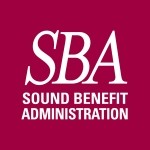When President Biden signed Joint House Resolution H.R. 7 into law in April, it called for the national emergency health declaration to end on May 11, 2023. When it was announced, the declaration created a number of impacts to employee benefit plans, especially for COBRA elections. You’ll recall that under the national emergency, people who experienced a COBRA qualifying event between March 1, 2020 and July 10, 2023 have enjoyed:
-
- longer timelines to elect COBRA,
- longer timelines to make all retroactive premium payments, and
- relaxed timelines to make monthly premium payments
Employers have enjoyed relaxed timelines to get COBRA notices mailed within 44 days of the qualifying event.
On the surface, these extensions seem straightforward, but what the declaration didn’t address was a continuation of coverage for a participant with outstanding payments. In essence, no one got insurance without payment. And, with the extended time to elect and pay, insurance didn’t go into effect until all retroactive payments were made.
This created a lot of confusion for participants (and recordkeeping on our part). Say you were a COBRA participant paying month-to-month but knew you now had relaxed timelines to pay, you might have taken your time submitting payments without realizing your account would be suspended if you didn’t pay within 30 days. Without payment, your prescriptions couldn’t be filled; office visits weren’t covered and any scheduled surgeries were cancelled. Now, SBA rarely received election forms and payments greater than three months retroactively… but still had to keep track of all the crazy dates this national emergency laid upon administrators and employers. Our heads were spinning here in Poulsbo.
Now what happens?
With the national emergency ending, how does that impact COBRA? Do we just go back to the way COBRA has worked since its inception in 1985? While we have been waiting for this day for a very long time, we’re not entirely out of the woods yet.
Since it’s been more than 3 years since the national health emergency was declared, let’s review what normal COBRA timelines look like:
-
- A person(s) experiencing a COBRA qualifying event must be provided a COBRA notice within 44 days from the event (employer + third party administrator responsibility)
- That person(s) may elect COBRA within 60 days from either the 1) loss of coverage or 2) the date the COBRA notice was mailed, whichever is the latter.
- That person(s) may elect either 1) with payment or 2) without payment.
- If they elect with payment, they are enrolled in the benefits they elect. They must pay their premiums within the 30-day grace period.
- If they elect without payment, they are sent COBRA coupons and told they will be enrolled when they pay the premium within 45 days of electing COBRA (the postmark date of the election notice).
For anyone experiencing a qualifying event after July 10, 2023, we resume normal COBRA operations. (Why July 10th? The law was signed on May 11th but the national emergency rules require that it be implemented sixty days after that date, which brings us to July 10th.) But, there are two sets of people who experienced a COBRA qualifying event since 2020 and the residual effects of the declaration still impact their COBRA participation:
- Those with qualifying events* between March 1, 2020 and July 10, 2022. These folks are eligible for a maximum one-year extension to the deadlines.
- Those with qualifying events* between July 11, 2022 and July 10, 2023. These folks would be eligible for an extension, however they won’t receive a full year extension. Their deadline would begin July 11, 2023.
- For 30-day deadlines, the new deadline would be August 9, 2023 (30 days after July 10th)
- For 45-day deadlines, the new deadline would be August 24, 2023 (45 days after July 10th)
- For 60-day deadlines, the new deadline would be September 8, 2023 (60 days after July 10th)
*Event date could be any date which starts the clock ticking, for example, the date a qualified beneficiary is mailed an election notice, a premium due date, or the date a qualified beneficiary makes an election (beginning the 45-day deadline to make the first premium payment).
So, very soon we can all rejoice. The end of the confusion and recordkeeping nightmare is near. As I said at the beginning of the article, the declaration had various impacts on benefit plans. This article specifically referred to COBRA, but HRAs and FSAs were impacted too. Read about the changes ahead for these programs here.
